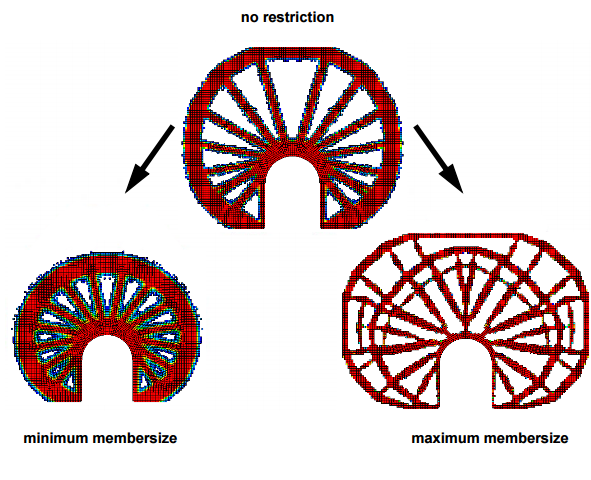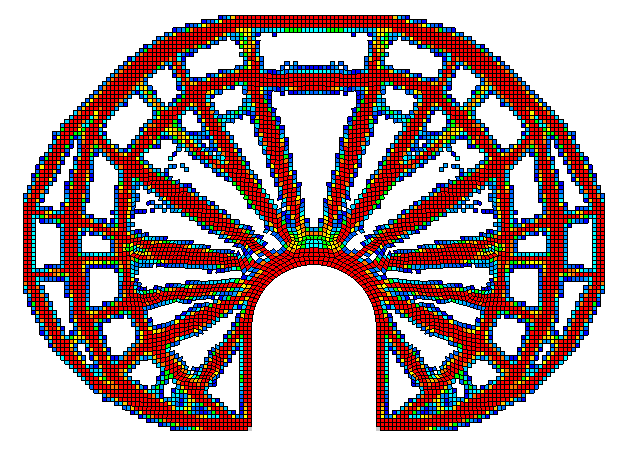-
For a minimum member size control, define a Design Variable Constraint (DVCON_TOPO) as follows:
DVCON_TOPO
ID_NAME = DVCON_MIN
EL_GROUP = ALL_ELEMENTS
CHECK_TYPE = MIN_MEMBER
THICKNESS = 6.0
END_
-
For a maximum member size control, define a Design Variable Constraint (DVCON_TOPO) as follows:
DVCON_TOPO
ID_NAME = DVCON_MAX
EL_GROUP = ALL_ELEMENTS
CHECK_TYPE = MAX_MEMBER
THICKNESS = 6.0
!DISTANCE = 6.0 !Use this value for METHOD = LOCAL_VOLUME
!METHOD = LOCAL_VOLUME !Different MAX_MEMBER algorithm, default METHOD = FILTER
END_
-
For plane symmetry, define a Design Variable Constraint (DVCON_TOPO) as follows:
CS_DEF
ID_NAME = CS_1
CS_TYPE = RECTANGULAR
DEF_TYPE = LOCAL
CS_REF = cs_0
ORIGIN_123 = 50.0, 100.0, 0.0
END_
LINK_TOPO
ID_NAME = PLANE_SYMMETRY
TYPE = PLANE_SYM, AXIS_1
CS = CS_1
END_
DVCON_TOPO
ID_NAME = DVCON_PLANE_SYMMETRY
EL_GROUP = ALL_ELEMENTS
CHECK_TYPE = LINK_TOPO
CHECK_LINK = PLANE_SYMMETRY
END_
-
To activate the control, reference the Design Variable Constraint in the OPTIMIZE command:
OPTIMIZE
ID_NAME = MAXIMIZE_STIFFNESS
DV = DV_DESIGN_ELEM
OBJ_FUNC = USER_OBJ_FUNC
!insert this line for minimum member size constraint
DVCON = DVCON_MIN
!insert this line for maximum member size constraint
DVCON = DVCON_MAX
DVCON = DVCON_PLANE_SYMMETRY
CONSTRAINT = VOLUME_CONSTRAINT
END_
Depending on the control, you can see different results:

Using the LOCAL_VOLUME setting for the MAX_MEMBER restriction, a different
algorithm is used resulting in another optimization result:


